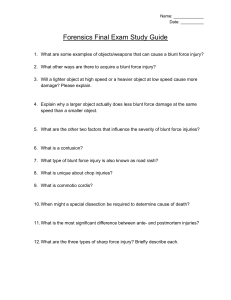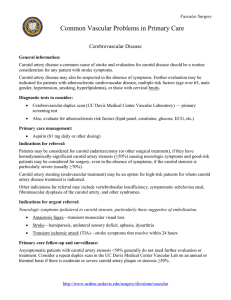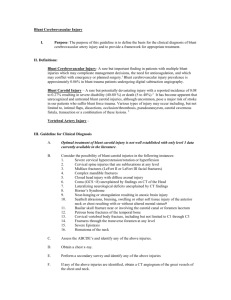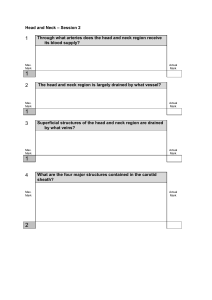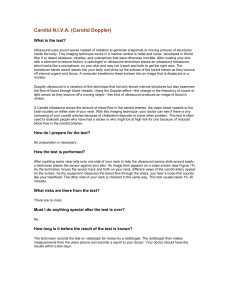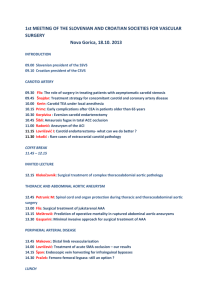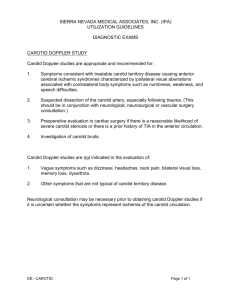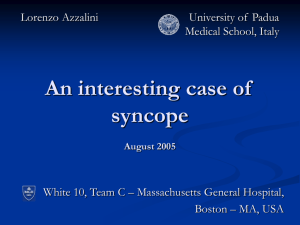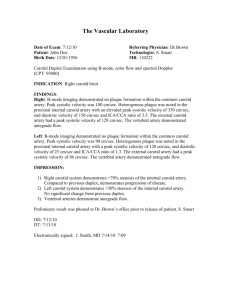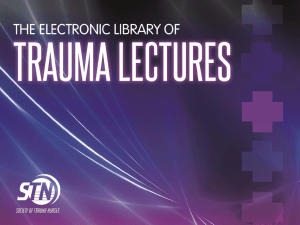Blunt carotid artery injury (BCAI) may result in serious neurologic
advertisement
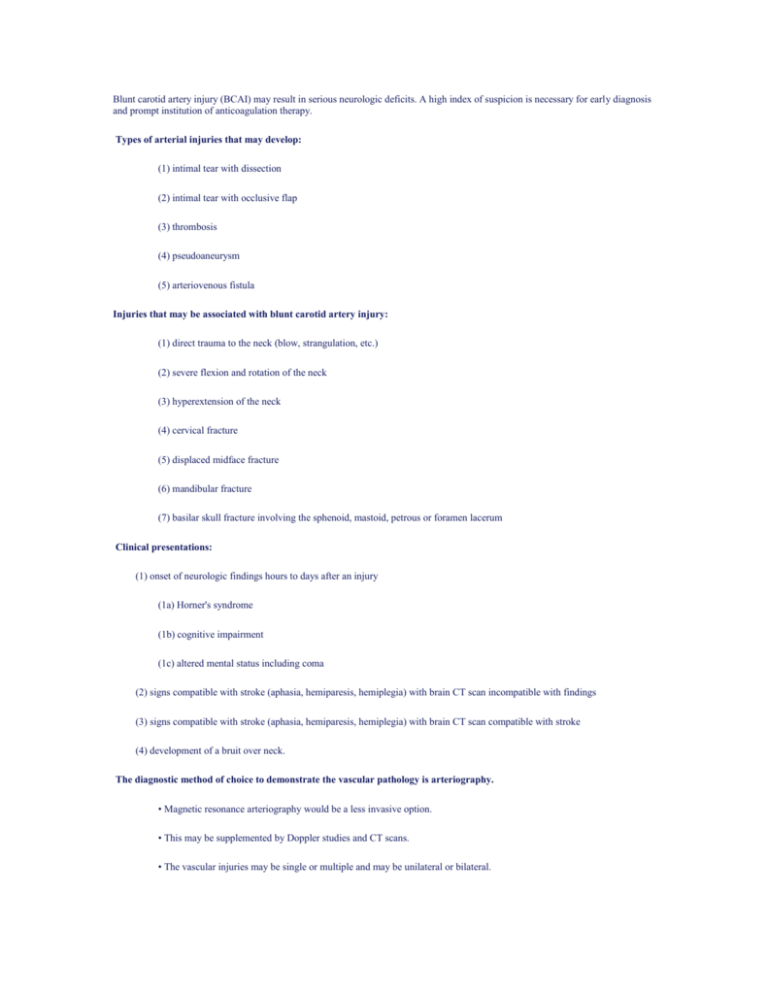
Blunt carotid artery injury (BCAI) may result in serious neurologic deficits. A high index of suspicion is necessary for early diagnosis and prompt institution of anticoagulation therapy. Types of arterial injuries that may develop: (1) intimal tear with dissection (2) intimal tear with occlusive flap (3) thrombosis (4) pseudoaneurysm (5) arteriovenous fistula Injuries that may be associated with blunt carotid artery injury: (1) direct trauma to the neck (blow, strangulation, etc.) (2) severe flexion and rotation of the neck (3) hyperextension of the neck (4) cervical fracture (5) displaced midface fracture (6) mandibular fracture (7) basilar skull fracture involving the sphenoid, mastoid, petrous or foramen lacerum Clinical presentations: (1) onset of neurologic findings hours to days after an injury (1a) Horner's syndrome (1b) cognitive impairment (1c) altered mental status including coma (2) signs compatible with stroke (aphasia, hemiparesis, hemiplegia) with brain CT scan incompatible with findings (3) signs compatible with stroke (aphasia, hemiparesis, hemiplegia) with brain CT scan compatible with stroke (4) development of a bruit over neck. The diagnostic method of choice to demonstrate the vascular pathology is arteriography. • Magnetic resonance arteriography would be a less invasive option. • This may be supplemented by Doppler studies and CT scans. • The vascular injuries may be single or multiple and may be unilateral or bilateral. References: Biffl WL, Moore EE, et al. The unrecognized epidemic of blunt carotid arterial injuries. Early diagnosis improves neurologic outcome. Annals Surgery. 1998; 228: 462-470. Carrillo EH, Osborne DL, et al. Blunt carotid artery injuries: Difficulties with the diagnosis prior to neurologic event. J Trauma Injury Infection Critical Care. 1999; 46: 1120-1125. Fabian TC, Patton JH Jr, et al. Blunt carotid injury. Importance of early diagnosis and anticoagulant therapy. Annals Surgery. 1996; 223: 513-525. Kumar SR, Weaver FA. Chapter 11: Carotid artery injuries. pages 135-140. IN: Demetriades D, Asensio JA. Trauma Management. Landes Bioscience. 2000.
